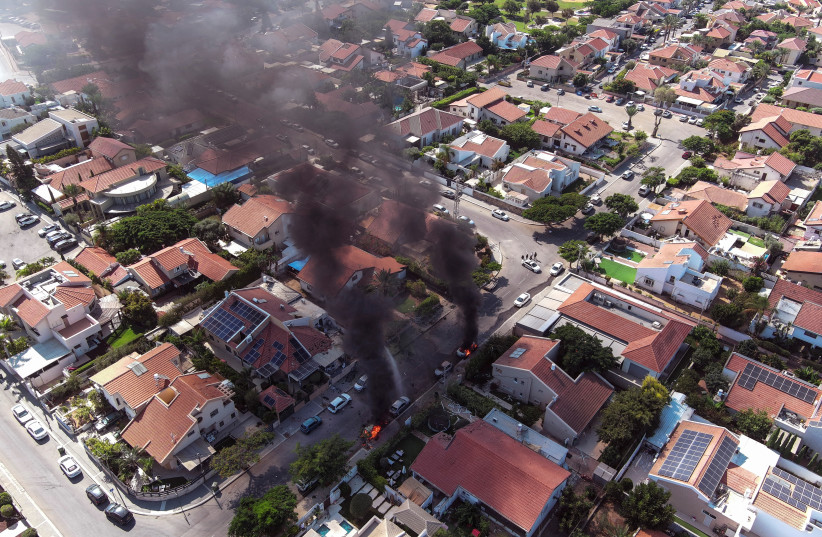Pro-Iranian media in the region have led their coverage on Sunday with images from the Hamas attacks on Israel.
For instance, Al-Mayadeen shows Palestinians crowding onto a Humvee, which the pro-Iran media organization labelled “Palestinian youth detain an occupation vehicle.” Iran’s Tasnim News, which is close to the IRGC, led with a photo of Palestinians cheering and dancing on an IDF Merkava tank.
The photos from the border of Hamas breaking through the security fence and flooding into Israel on October 7 are the photos that Iran’s axis of proxies were waiting for. This also is a kind of self-fulfilling prophecy for them.
For months Iran and its proxies have predicted that Israel is facing a major crisis from within and that the country is on the verge of collapse because of internal domestic protests.
Iran has sought to “unify” various fronts against Israel, including in the West Bank, Gaza, Lebanon and Syria. Towards this end Iran has pumped out propaganda that portrays Israel as weak.

Iran's media war
Now Iran’s media and the media of its proxies have the images that they were waiting for. They are able to circulate on social media the kinds of images that in the past were usually only in their imagination or propaganda films.
For instance, earlier this year, Hezbollah had put out a propaganda film showing its members attacking Israel and taking over an area on the border. That video was released in July. It is difficult not to see the similarities between the Hezbollah video and what actually transpired on October 7.
Therefore it is clear that that Iran’s hand is likely behind the attack and that this kind of attack was one that Iran was telegraphing to its proxies. The goal was to achieve the kinds of images that are now circulating on the Iranian media that will feed the Iranian regime perception that Israel is vulnerable.
The danger in Iran’s perceptions here is that while it has the images that it has wanted, this may fuel Iran’s own misperceptions of what is going on. For now Iran will distribute these images around the region and seek to use them to fuel increased tensions and conflict.
